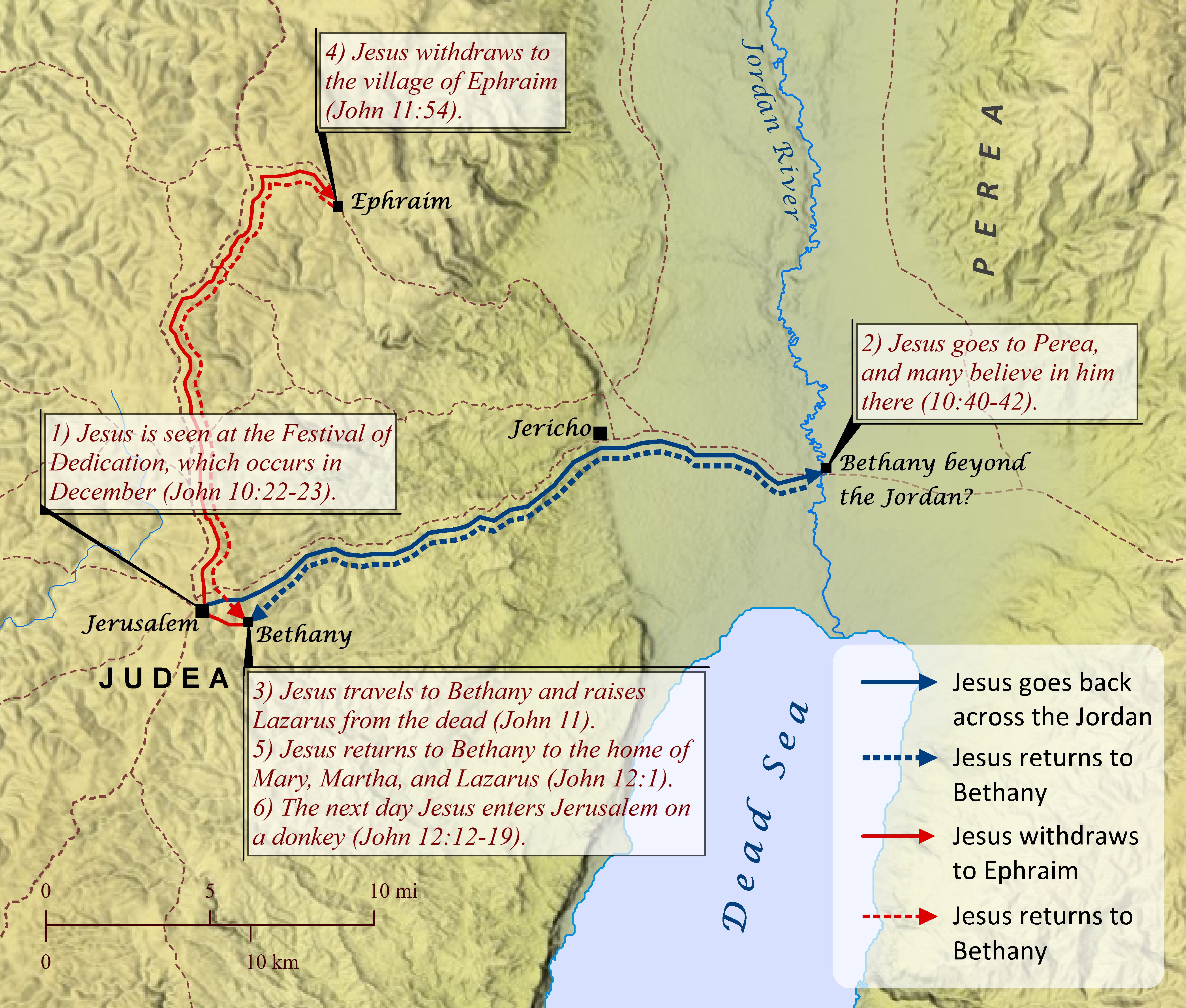Note: This view shows ‘verses’ which are not natural language units and hence sometimes only part of a sentence will be visible—click on any Bible version abbreviation down the left-hand side to see the verse in more of its context. Normally the OET discourages the reading of individual ‘verses’, but this view is only designed as a tool for doing comparisons of different translations—the older translations are further down the page (so you can read up from the bottom to trace the English translation history). The OET segments on this page are still very early looks into the unfinished texts of the Open English Translation of the Bible—please double-check these texts in advance before using in public.
AICNT [And][fn] Having said these things [[to them]],[fn] he remained in Galilee.
OEB After telling them this, he stayed on in Galilee.
LSB Having said these things to them, He stayed in Galilee.
WEBBE Having said these things to them, he stayed in Galilee.
WMBB (Same as above)
NET When he had said this, he remained in Galilee.
LSV and saying these things to them, He remained in Galilee.
FBV After saying this he stayed behind in Galilee.
TCNT After saying this [fn]to them, he remained in Galilee.
T4T After he said that, Jesus stayed a little longer in Galilee.
LEB And when he[fn] had said these things, he remained in Galilee.
BBE Having said these things to them, he still kept in Galilee.
Moff So saying, he stayed on in Galilee.
Wymth Such was His answer, and He remained in Galilee.
ASV And having said these things unto them, he abode still in Galilee.
DRA When he had said these things, he himself stayed in Galilee.
YLT and saying these things to them, he remained in Galilee.
Drby Having said these things to them he abode in Galilee.
RV And having said these things unto them, he abode still in Galilee.
SLT And speaking to them these things, he remained in Galilee.
Wbstr When he had said these words to them, he abode still in Galilee.
KJB-1769 When he had said these words unto them, he abode still in Galilee.
KJB-1611 When he had said these words vnto them, he abode still in Galilee.
(Modernised spelling is same as from KJB-1769 above)
Bshps When he had saide these wordes vnto them, he abode styll in Galilee.
(Modernised spelling is same as from KJB-1769 above, apart from marking of added words (and possibly capitalisation and punctuation))
Gnva These things he sayde vnto them, and abode still in Galile.
(These things he said unto them, and abode still in Galilee. )
Cvdl Whan he sayde this vnto them, he abode styll in Galile.
(When he said this unto them, he abode still in Galilee.)
TNT These wordes he sayde vnto them and abode still in Galile.
(These words he said unto them and abode still in Galilee. )
Wycl Whanne he hadde seid these thingis, he dwelte in Galilee.
(When he had said these things, he dwelled/dwelt in Galilee.)
Luth Da er aber das zu ihnen gesagt, blieb er in Galiläa.
(So he but the to/for to_them said, stayed he in Galiläa.)
ClVg Hæc cum dixisset, ipse mansit in Galilæa.
(This when/with would_have_said, exactly_that/himself mansit in/into/on Galilæa. )
UGNT ταῦτα δὲ εἰπὼν αὐτοῖς ἔμεινεν ἐν τῇ Γαλιλαίᾳ.
(tauta de eipōn autois emeinen en taʸ Galilaia.)
SBL-GNT ταῦτα ⸀δὲ εἰπὼν ⸀αὐτὸς ἔμεινεν ἐν τῇ Γαλιλαίᾳ.
(tauta ⸀de eipōn ⸀autos emeinen en taʸ Galilaia.)
RP-GNT Ταῦτα δὲ εἰπὼν αὐτοῖς, ἔμεινεν ἐν τῇ Γαλιλαίᾳ.
(Tauta de eipōn autois, emeinen en taʸ Galilaia.)
TC-GNT Ταῦτα [fn]δὲ εἰπὼν [fn]αὐτοῖς, ἔμεινεν ἐν τῇ Γαλιλαίᾳ.
(Tauta de eipōn autois, emeinen en taʸ Galilaia. )
Key for above GNTs: yellow:punctuation differs, red:words differ (from our SR-GNT base).
BMM BibleMapper.com Maps:

Jesus’ Final Journey to Jerusalem
Much like the difficulties of discerning the Israelites’ journey to the Promised Land (see here), the task of reconciling the four Gospel accounts of Jesus’ final journey to Jerusalem into one coherent itinerary has proven very challenging for Bible scholars. As with many other events during Jesus’ ministry, the accounts of Matthew, Mark, and Luke (often referred to as the Synoptic Gospels) present a noticeably similar account of Jesus’ final travels, while John’s Gospel presents an itinerary that is markedly different from the others. In general, the Synoptic Gospels present Jesus as making a single journey to Jerusalem, beginning in Capernaum (Luke 9:51), passing through Perea (Matthew 19:1-2; Mark 10:1) and Jericho (Matthew 20:29-34; Mark 10:46-52; Luke 18:35-19:10), and ending at Bethany and Bethphage, where he enters Jerusalem riding on a donkey (Matthew 21:1-11; Mark 11:1-11; Luke 19:28-44). John, on the other hand, mentions several trips to Jerusalem by Jesus (John 2:13-17; 5:1-15; 7:1-13; 10:22-23), followed by a trip to Perea across the Jordan River (John 10:40-42), a return to Bethany where he raises Lazarus from the dead (John 11), a withdrawal to the village of Ephraim for a few months (John 11:54), and a return trip to Bethany, where he then enters Jerusalem riding on a donkey (John 12:1-19). The differences between the Synoptics’ and John’s accounts are noteworthy, but they are not irreconcilable. The Synoptics, after noting that Jesus began his trip at Capernaum, likely condensed their accounts (as occurs elsewhere in the Gospels) to omit Jesus’ initial arrival in Jerusalem and appearance at the Festival of Dedication, thus picking up with Jesus in Perea (stage 2 of John’s itinerary). Then all the Gospels recount Jesus’ trip (back) to Bethany and Jerusalem, passing through Jericho along the way. Likewise, the Synoptics must have simply omitted the few months Jesus spent in Ephraim to escape the Jewish leaders (stage 4 of John’s itinerary) and rejoined John’s account where Jesus is preparing to enter Jerusalem on a donkey.
